Flora and Fauna of Crete P2
Crete is an ideal spot for bird-watching, as it is host to birds of prey and migratory birds. Migratory species that just pass through include the Red-
billed Chuff, the Short-toed Snake Eagle, the Western Marsh Harrier, the Hen Harrier and the Barn Owl. The mountains and gorges are safe nesting
sites for the rare species and birds of prey. There are more than 400 species of birds to look out for. At least 80 species of birds reproduce on
Crete, including some of the rarest birds of prey in Europe, such as the Bearded Vulture, the Golden Eagle, Bonelli’s Eagle and the Griffon Vulture.
The Bearded Vulture is the rarest vulture to be found in Europe. It is the largest of all the birds of prey on Crete, with a wingspan of over 2.5 metres
and measuring more than 1 metre from beak to tail. It weighs in at between 5 to 8 kilograms, depending on whether it is male or female. It is a
protected species, at risk of extinction; it has declined dramatically in numbers since the 1990s. Crete has the only viable population in Greece;
there are only four breeding pairs in the Cretan mountains out of a population of just 25.
The Griffon Vulture is another large bird of prey, which enjoys the generous food supply in the Cretan mountains. There is a colony of about 35
birds in the gorge of Selinari, 8 kilometres from Neapoli. The birds roost and breed on southeast facing cliffs above the small bridge on the old
road. These magnificent birds can often be seen soaring the thermals. Plans are afoot to create a centre for the protection of the flora and fauna
around the Selinari Gorge. Already hunting is forbidden anywhere within 10 sq. km. of the area. It is hoped that a wildlife station will be developed
so that the Griffon Vulture colony can be observed in detail.
The Golden Eagle has also made its home in the Cretan mountains. It is able to survive at the moment because of a good supply of prey (mainly
partridges), but is under threat from humans. They are to be found in the Psiloritis mountain ranges; there are breeding pairs in the east and
southeast areas and young birds and solitary adults to the west and northeast.
The Bonelli’s Eagle is to be found on Crete in the Asterousia Mountains on Crete. They nest on rocks at altitudes of up to 1500 metres. A breeding
pair will build up to 6 nests, which are used in rotation. They are relatively small with a wingspan of 150 – 180 cm. and measure 65 – 72 cm. in
length. They are aggressive birds and renowned for their speed in flight. They prey on small birds and mammals – hares, rodents, rabbits,
partridges and pigeons. It is considered to be a vulnerable species; major threats are poaching, habitat loss and pesticides.
The Peregrine Falcon is called Petritis by the Cretans. They nest on steep slopes or in trees but the excessive use of pesticides has had a serious
effect on their numbers. The peregrine is the fastest animal on earth. A cheetah can run up to 70 m.p.h. on land, whereas a peregrine can dive at
speeds of over 200 m.p.h. That’s faster than a sneeze (100 m.p.h.) and about the same speed as an F1 racing car. They take their prey, medium-
sized birds, small mammals and reptiles, by a steep vertical dive.
Eleonora’s Falcon is a migratory bird, which over-winters in East Africa and arrives in the Mediterranean in April. Greece has 80% of the world’s
population. On Crete it is called the Mavropetritis (the Black Falcon). It nests on cliffs and prefers to live away from humans on uninhabited islets.
On Crete, colonies have been found on the small island of Dia across from Heraklion. They are small birds; body length is only 36-40 cm. and they
have a wingspan of 84-103 cm. They feed on large insects and small birds. The species is suffering from tourist development, illegal hunting and,
yet again, the excessive use of pesticides.


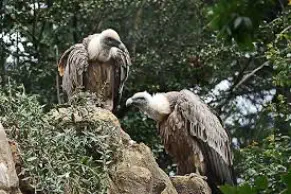

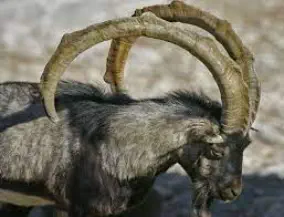

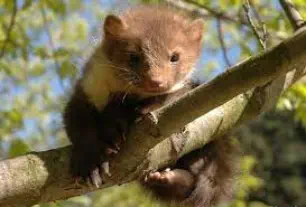


Birds of Crete - Follow this link Cretan Birds
Flowers of Crete - Follow this link Flowers of Crete
Butterflies of Crete - Follow this link Butterflies of Crete
Cretan Flora - Follow this link Cretan Flora
Sorry, but these are only available in English at present.
Publication by Natura 2000 in collaboration with The University of Crete
looking at the Ecosystem of the Mountain Areas of Crete - Available Here
If you are interested in Crete’s biodiversity we would encourage to plan a trip to
The Natural History Museum in Heraklion…a great place for a family outing.
Crete is an ideal spot for bird-watching, as it is host to birds of prey
and migratory birds. Migratory species that just pass through
include the Red-billed Chuff, the Short-toed Snake Eagle, the
Western Marsh Harrier, the Hen Harrier and the Barn Owl. The
mountains and gorges are safe nesting sites for the rare species and
birds of prey. There are more than 400 species of birds to look out
for. At least 80 species of birds reproduce on Crete, including some
of the rarest birds of prey in Europe, such as the Bearded Vulture,
the Golden Eagle, Bonelli’s Eagle and the Griffon Vulture.
The Bearded Vulture is the rarest vulture to be found in Europe. It is
the largest of all the birds of prey on Crete, with a wingspan of over
2.5 metres and measuring more than 1 metre from beak to tail. It
weighs in at between 5 to 8 kilograms, depending on whether it is
male or female. It is a protected species, at risk of extinction; it has
declined dramatically in numbers since the 1990s. Crete has the
only viable population in Greece; there are only four breeding pairs
in the Cretan mountains out of a population of just 25.
The Griffon Vulture is another large bird of prey, which enjoys the
generous food supply in the Cretan mountains. There is a colony of
about 35 birds in the gorge of Selinari, 8 kilometres from Neapoli.
The birds roost and breed on southeast facing cliffs above the small
bridge on the old road. These magnificent birds can often be seen
soaring the thermals. Plans are afoot to create a centre for the
protection of the flora and fauna around the Selinari Gorge. Already
hunting is forbidden anywhere within 10 sq. km. of the area. It is
hoped that a wildlife station will be developed so that the Griffon
Vulture colony can be observed in detail.
The Golden Eagle has also made its home in the Cretan mountains.
It is able to survive at the moment because of a good supply of prey
(mainly partridges), but is under threat from humans. They are to
be found in the Psiloritis mountain ranges; there are breeding pairs
in the east and southeast areas and young birds and solitary adults
to the west and northeast.
The Bonelli’s Eagle is to be found on Crete in the Asterousia
Mountains on Crete. They nest on rocks at altitudes of up to 1500
metres. A breeding pair will build up to 6 nests, which are used in
rotation. They are relatively small with a wingspan of 150 – 180 cm.
and measure 65 – 72 cm. in length. They are aggressive birds and
renowned for their speed in flight. They prey on small birds and
mammals – hares, rodents, rabbits, partridges and pigeons). It is
considered to be a vulnerable species; major threats are poaching,
habitat loss and pesticides.
The Peregrine Falcon is called Petritis by the Cretans. They nest on
steep slopes or in trees but the excessive use of pesticides has had
a serious effect on their numbers. The peregrine is the fastest
animal on earth. A cheetah can run up to 70 m.p.h. on land,
whereas a peregrine can dive at speeds of over 200 m.p.h. That’s
faster than a sneeze (100 m.p.h.) and about the same speed as an
F1 racing car. They take their prey, medium-sized birds, small
mammals and reptiles, by a steep vertical dive.
Eleonora’s Falcon is a migratory bird, which over-winters in East
Africa and arrives in the Mediterranean in April. Greece has 80% of
the world’s population. On Crete it is called the Mavropetritis (the
Black Falcon). It nests on cliffs and prefers to live away from
humans on uninhabited islets. On Crete, colonies have been found
on the small island of Dia across from Heraklion. They are small
birds; body length is only 36-40 cm. and they have a wingspan of 84-
103 cm. They feed on large insects and small birds. The species is
suffering from tourist development, illegal hunting and, yet again,
the excessive use of pesticides.
Flora and Fauna of Crete P2
Birds of Crete - Follow this link Cretan Birds
Flowers of Crete - Follow this link Flowers of Crete
Butterflies of Crete - Follow this link Butterflies of Crete
Cretan Flora - Follow this link Cretan Flora
Sorry, but these are only available in English at present.
Publication by Natura 2000 in collaboration with
The University of Crete
looking at the Ecosystem of the
Mountain Areas of Crete - Available Here
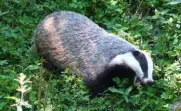
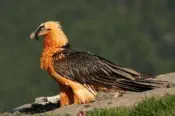
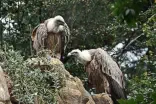
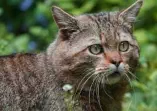
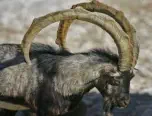
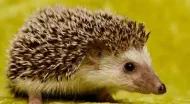
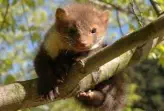
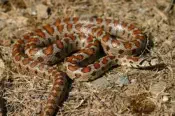

If you are interested in Crete’s biodiversity we would encourage
to plan a trip to The Natural History Museum in
Heraklion…a great place for a family outing.

